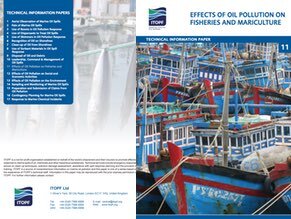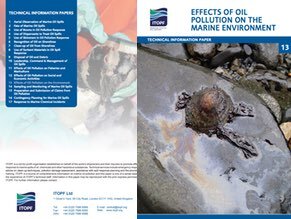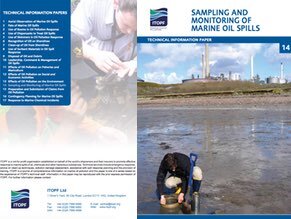Environmental Effects

The effects of oil spills can have wide ranging impacts that are often portrayed by the media as long lasting environmental disasters. Such perceptions are understandable as they are often fuelled by distressing images of oiled birds and other wildlife.
It is true that an oil spill can have severe short term effects, especially when organisms are considered on an individual basis. However, environmental impacts should always be measured in a scientific context and should be appraised at an ecosystem rather than individual level. In other words, it is important (or more representative of long term environmental effects) to base the extent of environmental damage on the effects to ecosystems. For example, has the ecosystem retained its normal functions or how quickly will they resume following an oil spill?
Under normal conditions many of the ecosystems most frequently affected by marine oil spills are accustomed to natural disturbances. For example, shallow coral reefs are some of the most dynamic environments, frequently exposed to the intense forces of typhoons and tsunamis. Disturbances of this nature typically create space for new organisms to settle and grow. In time, natural processes repair damage caused by such events, returning an ecosystem to its previous functions, albeit potentially comprised of different individual organisms. Natural recovery processes are also important in remediating the effects of oil spills. Recovery can be assisted by the removal of oil through well-conducted clean-up operations, and may sometimes be accelerated with carefully planned restoration measures.
How Can Oil Spills Cause Damage to the Environment?
The effects of an oil spill will depend on a variety of factors including, the quantity and type of oil spilled, and how it interacts with the marine environment. Prevailing weather conditions will also influence the oil’s physical characteristics and its behaviour. Other key factors include the biological and ecological attributes of the area; the ecological significance of key species and their sensitivity to oil pollution as well as the time of year. It is important to remember that the clean-up techniques selected will also have a bearing on the environmental effects of a spill.
Oil spills may impact the environment in the following ways:
- Physical smothering of organisms: This is caused by oils with a high viscosity, in other words heavy oils. Smothering will affect an organism’s physical ability to continue critical functions such as respiration, feeding and thermoregulation.
- Chemical toxicity: This is characteristic of lighter chemical components which are more bio-available, ie absorbed into organs, tissues and cells, and can have sub-lethal or lethal toxic effects.
- Ecological changes: This is caused by the loss of key organisms with a specific function in an ecological community. They can be replaced by different species undertaking similar functions in which case the implications for the ecosystem as a whole may not be severe. However, more detrimental is the niche in the community being replaced with organisms performing completely different functions thereby altering the ecosystem dynamics.
- Indirect effects: Loss of shelter or habitat through oiling or clean-up operations.
What Characterises Recovery for the Marine Environment?
Extensive research and detailed post-spill studies have shown that even major oil spills will rarely cause permanent effects.
Marine ecosystems have high natural variability and are subject to ever-changing environmental phenomena such as storms, climatic anomalies (eg El Niño) as well as anthropogenic pressures. Furthermore, marine organisms have varying degrees of natural resilience to these pressures on their habitats. This natural variability means it is unlikely that exact pre-spill conditions will be reached. It makes determining the point of recovery following an oil spill, and the time it will take, difficult to accurately predict.
It is generally accepted that recovery is reached when a community of plants and animals characteristic of that habitat are established and functioning normally.
Explore Documents on Environmental Effects
TIP 11: 漁業及び養殖業に対する油汚染の影響
本資料では、船舶からの油汚染がもたらす漁業や養殖業への影響について述べ、油流出被害の重
大性を軽減する役に立つ対応措置や管理戦略に関するガイダンスを提供する。他の経済資源の被
害については別の技術情報資料にて考察している。
Categories: Environmental effects, Economic effects, Technical Information Paper (TIPS)
TIP 13: 環境に対する油汚染の影響
本資料では、船からの油流出とその結果必要となる防除活動が海洋動植物とそれらの生息環境にどのような影響を与えるかについて述べる。特に、長年さまざまな研究のテーマになってきた油と生物系の複雑な相互作用の考察に注目する。
Categories: Environmental effects, Technical Information Paper (TIPS)
TIP 14: 海上流出油のサンプリングと監視
本資料では、油汚染の定性的・定量的な監視に使うことができる監視およびサンプリングの手順と
手段について幅広く概観している。定性分析は油汚染の流出源を確定することができるが、監視プ
ログラムは炭化水素レベルの定量的な経時変化に関係していることが多い。本資料では分析の適
正手順に関するガイダンスを行うとともに、共通用語について説明している。しかし、特定の生態学
的または生物学的影響および空気中の汚染物質を監視するために必要な技術および調査につい
ては本資料の対象としていない。
Categories: Environmental effects, Planning & operations, Technical Information Paper (TIPS)





